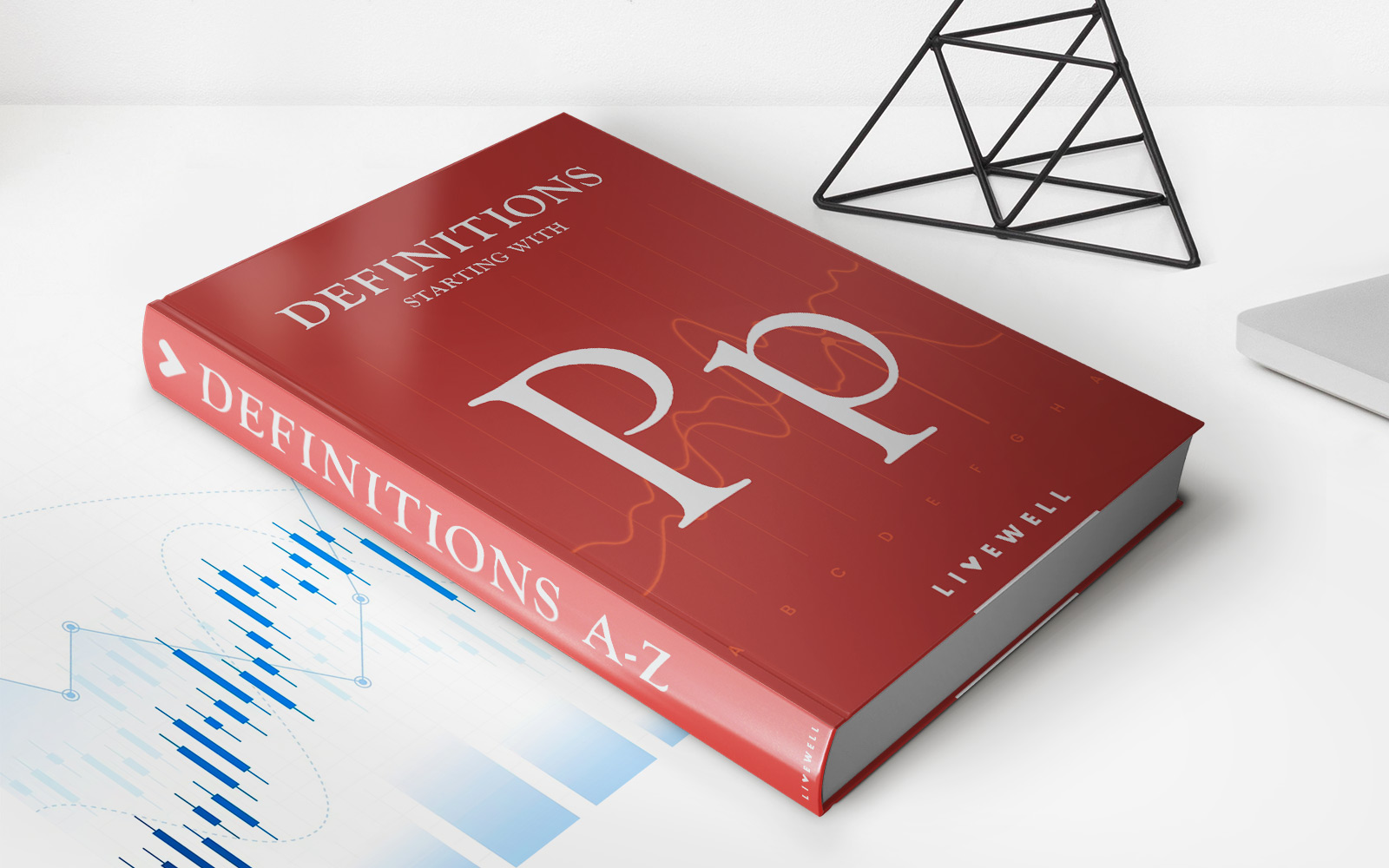

Finance
What Is Life Insurance Underwriting?
Modified: February 21, 2024
Learn about life insurance underwriting and how it plays a vital role in the financial industry. Explore the various factors that influence the underwriting process.
(Many of the links in this article redirect to a specific reviewed product. Your purchase of these products through affiliate links helps to generate commission for LiveWell, at no extra cost. Learn more)
Table of Contents
Introduction
Life insurance underwriting is a crucial aspect of the insurance industry that plays a vital role in assessing risk and determining insurance premiums. It is the process by which insurance companies evaluate applicants for life insurance policies to determine their eligibility, coverage amounts, and premium rates.
The concept of underwriting dates back centuries when insurers would manually assess an individual’s risk factors. However, with advancements in technology and data analysis, the underwriting process has become more sophisticated and efficient.
In today’s complex financial landscape, life insurance underwriting helps insurance companies assess the potential risks associated with insuring an individual. By analyzing an applicant’s health, lifestyle, occupation, and other relevant factors, insurance companies can make informed decisions on policy issuance and pricing.
This article will provide a comprehensive overview of life insurance underwriting, exploring its purpose, process, factors considered, types of underwriting decisions, and its overall importance in the insurance industry.
Definition of Life Insurance Underwriting
Life insurance underwriting is the process by which insurance companies evaluate and assess the risk associated with insuring an individual’s life. It involves analyzing various factors such as the applicant’s health, age, lifestyle, occupation, and medical history to determine their eligibility for coverage, the appropriate insurance premium rates, and the coverage amount offered.
The purpose of life insurance underwriting is to evaluate the likelihood of an individual making a claim based on their unique risk profile. Insurance companies aim to strike a balance between providing affordable coverage to policyholders while ensuring that they can effectively manage and mitigate potential risks.
During the underwriting process, insurers collect and examine a range of information through medical examinations, questionnaires, and records to assess the applicant’s health and habits. This information is crucial in determining the level of risk associated with insuring the individual.
The underwriting process is primarily carried out by underwriters who are trained professionals with expertise in assessing risk and determining the appropriate insurance terms. They carefully analyze the gathered information and use statistical models and industry guidelines to evaluate the risk profile of the applicant.
Based on their evaluation, underwriters then make decisions on whether to approve or decline an application for life insurance. If approved, they also determine the premium rates and coverage amounts. The underwriting process plays a critical role in protecting the financial stability of the insurance company by ensuring that the premiums charged adequately reflect the risk involved in insuring the individual.
In summary, life insurance underwriting is the process of evaluating an individual’s risk factors to determine their eligibility for life insurance coverage and to set appropriate premium rates. It is a crucial component of the insurance industry, allowing insurers to accurately assess risk and provide policyholders with the necessary financial protection.
Purpose of Life Insurance Underwriting
The primary purpose of life insurance underwriting is to assess the risk associated with insuring an individual’s life. By evaluating various factors, underwriters determine the eligibility, coverage amounts, and premium rates for life insurance policies. This process serves several important purposes:
- Risk Evaluation: Life insurance underwriting allows insurance companies to assess the risk profile of applicants. By analyzing factors such as age, health, lifestyle, occupation, and medical history, underwriters can evaluate the likelihood of an individual making a claim. This helps insurers determine if coverage can be provided and at what cost.
- Setting Appropriate Premium Rates: Underwriters play a crucial role in determining the premium rates for life insurance policies. Based on their assessment of the applicant’s risk factors, underwriters set the premium amount that the policyholder must pay to maintain coverage. By charging appropriate premiums, insurance companies can cover their expenses, manage risk, and ensure the financial stability of the company.
- Fairness and Equity: Life insurance underwriting ensures fairness and equity among policyholders. By assessing individual risk factors, underwriters can tailor coverage and premium rates to fit each applicant’s unique circumstances. This ensures that individuals who pose a higher risk are charged higher premiums, while those with lower risk factors receive more affordable rates.
- Preventing Adverse Selection: Underwriting plays a critical role in preventing adverse selection, which is the tendency for higher-risk individuals to seek insurance coverage more readily than lower-risk individuals. Through the underwriting process, insurance companies can accurately assess the risk of each applicant and adjust premium rates accordingly, mitigating the possibility of adverse selection.
- Protecting Financial Stability: Life insurance underwriting helps safeguard the financial stability of insurance companies. By carefully evaluating risk factors and setting appropriate premiums, insurers can ensure they have sufficient funds to pay out claims to policyholders when needed. This protects the insurer from potential insolvency and ensures the long-term viability of the company.
In summary, the purpose of life insurance underwriting is to evaluate risk, set appropriate premium rates, maintain fairness and equity among policyholders, prevent adverse selection, and protect the financial stability of insurance companies. It is a crucial process that enables insurers to provide effective and sustainable life insurance coverage to individuals and families.
Underwriting Process
The underwriting process for life insurance involves several steps to assess an applicant’s risk profile and determine the appropriate coverage and premium rates. While the specifics may vary between insurance companies, the general steps in the underwriting process are as follows:
- Application Submission: The first step is the submission of an application for life insurance coverage. This typically includes providing personal information, medical history, lifestyle details, and any other relevant information requested by the insurer.
- Underwriting Evaluation: Once the application is received, it undergoes a thorough evaluation by a qualified underwriter. The underwriter assesses the applicant’s risk factors by reviewing the provided information, and in some cases, requesting additional documents or medical examinations.
- Medical Underwriting: Medical underwriting is a crucial component of the process and involves reviewing the applicant’s medical records and conducting medical exams. This helps determine the individual’s current health status and any underlying medical conditions that may impact their risk profile.
- Risk Assessment: The underwriter analyzes all the gathered information, including medical history, lifestyle choices (such as smoking or hazardous activities), and occupational risks. They assess the likelihood of the individual making a claim and evaluate the associated risks.
- Decision Making: Based on the risk assessment, the underwriter makes a decision on the application. They may approve the application as is, request additional information, offer modified terms (such as higher premiums or lowered coverage amounts), or decline the application.
- Premium Determination: If the application is approved, the underwriter determines the appropriate premium rates. This involves considering the individual’s risk factors, age, health status, and other relevant factors to calculate the cost of coverage.
- Policy Issuance: Once the premium rates are determined, the insurer issues the policy to the applicant. The policy outlines the coverage provided, premium payment terms, and any specific conditions or exclusions.
- Ongoing Monitoring: Life insurance policies may undergo periodic review or updates. In some cases, insurers may conduct further evaluations or request updated medical information to ensure the policy remains accurate and relevant.
The underwriting process is essential for insurance companies to effectively assess risk and provide appropriate coverage. It relies on the expertise of underwriters who carefully evaluate an applicant’s risk profile to determine eligibility and set premiums for life insurance policies.
Factors Considered in Life Insurance Underwriting
Life insurance underwriting involves the evaluation of various factors to assess an individual’s risk profile. These factors help underwriters determine an applicant’s eligibility for coverage, the coverage amount, and the premium rates. The following are some of the key factors considered in life insurance underwriting:
- Age: Age is an important factor in life insurance underwriting. Generally, younger individuals are considered lower risk, as they are assumed to have fewer health issues. Older applicants may face higher premiums due to an increased likelihood of health complications or a shorter life expectancy.
- Health History: Underwriters review an applicant’s medical history to assess any pre-existing conditions or chronic illnesses that may impact their risk profile. This includes evaluating records of surgeries, hospitalizations, medications, and any ongoing treatments or therapies.
- Lifestyle Choices: Factors such as smoking, excessive alcohol consumption, and involvement in high-risk activities or occupations can significantly impact an individual’s risk profile. Underwriters evaluate these lifestyle choices to determine the associated risks and adjust premiums accordingly.
- Family Medical History: Family medical history plays a role in underwriting, as certain hereditary medical conditions may increase an individual’s risk. Underwriters consider any family history of diseases, such as cancer, heart disease, or diabetes, when assessing an applicant’s risk profile.
- Occupation and Hobbies: The type of occupation and hobbies an individual engages in can affect their risk level. Certain professions with higher physical or occupational hazards, such as firefighters or pilots, may face higher premiums. Similarly, engaging in potentially dangerous hobbies like skydiving or scuba diving can increase the risk profile.
- Body Mass Index (BMI): Body mass index, which assesses an individual’s weight in relation to their height, is often considered in underwriting. Higher BMIs may indicate a higher risk of health issues, such as cardiovascular disease or diabetes, and can lead to increased premiums.
- Gender: Gender plays a role in underwriting due to statistical differences in life expectancy and health trends. Women tend to have longer life expectancies and may, therefore, be offered slightly lower premiums compared to men.
- Medical Examinations: Underwriters may require applicants to undergo medical examinations to gather specific health data. These exams can include blood tests, urine tests, blood pressure readings, and other medical assessments to evaluate an individual’s overall health and identify any potential risks.
Insurance companies consider these factors and others to assess an applicant’s risk profile and determine the appropriate coverage and premium rates for life insurance policies. It’s important to note that different insurance companies may prioritize certain factors differently, leading to variations in underwriting guidelines and outcomes.
Types of Underwriting Decisions
In life insurance underwriting, various types of decisions are made based on the evaluation of an applicant’s risk profile. These decisions determine the eligibility of the applicant for coverage and the terms of the policy. The following are the common types of underwriting decisions:
- Approval: When an application is approved, it means the underwriter has determined that the applicant meets the necessary requirements and can be offered a life insurance policy. The coverage amount and premium rates will be based on the applicant’s risk profile and other relevant factors.
- Decline: If an application is declined, it means the underwriter has determined that the applicant poses too high of a risk for the company to provide coverage. This can be due to severe health issues, a history of high-risk activities, or other factors that present too much risk for the insurer.
- Modification: This decision involves offering coverage to an applicant, but with modified terms. Modifications can include adjusting the coverage amount, increasing premium rates, or implementing certain exclusions or limitations in the policy. These modifications aim to manage the risk associated with insuring the individual while still providing some level of coverage.
- Request for More Information: In some cases, underwriters may need additional information to make a decision. They may request further documentation, medical records, or additional examination results to gather a more comprehensive understanding of the applicant’s risk profile before finalizing their decision.
- Policy Review: After the initial underwriting decision, insurers may periodically review policyholders’ information. This review can result in adjustments to the policy terms, coverage amounts, or premium rates based on changes in the applicant’s risk factors, health status, or overall circumstances.
Underwriting decisions are made based on a thorough assessment of an applicant’s risk profile and the insurer’s risk management policies. The decisions aim to ensure that the risk is adequately managed while providing individuals with the necessary coverage for their life insurance needs.
Importance of Life Insurance Underwriting
Life insurance underwriting plays a vital role in the insurance industry, offering several important benefits for both insurance companies and policyholders. The following are key reasons highlighting the importance of life insurance underwriting:
- Risk Assessment: Underwriting allows insurance companies to accurately assess the risk associated with insuring an individual. By evaluating factors such as age, health history, lifestyle choices, and occupation, underwriters can determine the likelihood of the policyholder making a claim. This risk assessment helps insurance companies set appropriate premiums and coverage amounts.
- Financial Protection: Life insurance provides essential financial protection for individuals and their families. Underwriting ensures that policyholders receive the necessary coverage based on their unique risk profiles. Adequate coverage enables beneficiaries to manage financial obligations, such as paying off debts, covering daily living expenses, and maintaining their quality of life in the event of the policyholder’s death.
- Fairness and Equity: Underwriting promotes fairness and equity among policyholders by tailoring coverage and premiums to individual risk profiles. Those who present higher risks, such as individuals with pre-existing medical conditions or high-risk occupations, often pay higher premiums, reflecting the increased likelihood of claims. This ensures that lower-risk individuals are not subsidizing the coverage of higher-risk individuals.
- Preventing Adverse Selection: Adverse selection occurs when individuals with higher risks are more likely to seek insurance coverage, while those with lower risks choose not to get insured. Underwriting helps mitigate adverse selection by accurately assessing risk and setting appropriate premiums for each individual. This ensures that insurance pools contain a diverse range of risks, which helps maintain the long-term viability of insurance companies.
- Profitability and Sustainability: Life insurance underwriting is crucial for insurance companies’ profitability and long-term sustainability. By accurately assessing risk and setting appropriate premiums, insurers can effectively manage their obligations and maintain financial stability. This allows them to honor claims and continue providing coverage for policyholders now and in the future.
- Consumer Confidence: The underwriting process instills confidence in consumers as it ensures that insurance policies are priced appropriately and offer adequate coverage. Knowing that their policy is based on a thorough evaluation of their risk factors reassures policyholders that their insurance company will be there when they need it most, providing peace of mind to individuals and their loved ones.
In summary, life insurance underwriting is essential for accurately assessing risk, providing financial protection, ensuring fairness and equity, mitigating adverse selection, maintaining profitability, and instilling consumer confidence. It serves as a critical component of the insurance industry, allowing both insurers and policyholders to navigate the complexities of life insurance effectively.
Challenges in Life Insurance Underwriting
Life insurance underwriting faces several challenges that can impact the efficiency and accuracy of the process. These challenges require continuous adaptation and innovation to ensure the underwriting process remains robust and effective. The following are some common challenges in life insurance underwriting:
- Access to Information: Underwriters rely on accurate and up-to-date information to assess an applicant’s risk profile. Limited access to comprehensive medical records, especially for individuals who have sought care from multiple providers, can make it challenging to obtain a complete picture of an applicant’s health history.
- Evolving Medical Advancements: Medical advancements and treatments continually evolve, which can present challenges in underwriting. New therapies or medications may have different implications for an individual’s risk profile, and underwriters must stay informed and updated on these advancements to accurately assess risk.
- Subjectivity: Underwriting decisions involve a level of subjectivity, as different underwriters may interpret risk factors differently. This can lead to variations in decisions, premiums, and coverage amounts between insurance companies. Ensuring consistency and standardization in underwriting practices is vital for maintaining fairness and transparency.
- Data Quality and Privacy: The accuracy and reliability of the data used in underwriting are essential. However, data quality issues can arise due to errors, omissions, or outdated information. Additionally, strict data privacy regulations must be adhered to, ensuring confidentiality and protection of applicants’ personal and sensitive information.
- Emerging Risks: New and emerging risks, such as emerging diseases or changing societal norms, pose challenges for underwriters. These risks may require the development of new underwriting guidelines or the incorporation of additional risk assessment factors to accurately evaluate an individual’s risk profile.
- Automation and Technology: While automation and technology have improved the efficiency of underwriting processes, implementation challenges can arise. Incorporating new technologies effectively and ensuring the accuracy of automated algorithms and models require ongoing monitoring and validation.
- Adapting to Market Demands: Insurance companies need to continually adapt their underwriting practices to meet changing market demands. This includes developing innovative products, accommodating evolving customer preferences, and staying competitive in an ever-changing industry landscape.
Addressing these challenges requires collaboration between insurance companies, underwriters, and regulators. Embracing advanced technologies, promoting data accuracy and quality, and continuously educating underwriters on emerging risks are crucial for enhancing the effectiveness and efficiency of life insurance underwriting.
Conclusion
Life insurance underwriting is a critical process that plays a significant role in the insurance industry. It enables insurance companies to assess risk, set appropriate premiums, and provide individuals and their families with essential financial protection. Through a thorough evaluation of various factors like age, health history, lifestyle choices, and occupation, underwriters determine eligibility, coverage amounts, and premium rates.
The underwriting process serves multiple important purposes. It ensures fair and equitable pricing by tailoring coverage and premiums to individual risk profiles. It prevents adverse selection and safeguards the financial stability of insurance companies. Additionally, underwriting promotes consumer confidence, as policyholders can trust that their coverage is based on a rigorous evaluation of their specific risk factors.
However, life insurance underwriting faces several challenges, such as access to accurate and up-to-date information, evolving medical advancements, subjectivity in decision-making, data quality, emerging risks, and the need to adapt to market demands. Overcoming these challenges requires continuous adaptation, embracing technology, adhering to data privacy regulations, and staying updated with industry trends.
In conclusion, life insurance underwriting is a vital process that ensures the effective assessment of risk and the provision of suitable coverage and premium rates. It is an essential component of the insurance industry, benefiting both insurance companies and policyholders by promoting fairness, stability, and financial protection. By addressing the challenges and embracing innovation, life insurance underwriting can continue to evolve and meet the evolving needs of individuals and families seeking reliable financial protection.














